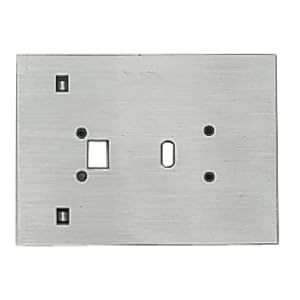8 Tips to Identify Antiques


Want to know if your furniture is as old as you might think? Here are some tips to help you identify an antique.
1. Patina
An old table will have a rich, beautiful finish. Decades of polishing and exposure to the elements create patina. Check underneath a table. On an older table, the appearance of the wood will be much different underneath than on the top. The underside will be lighter because it has not been polished or had use. This is a clue to advanced age.
2. Handmade
Look for handmade furniture. Antique furniture was hand made by craftsmen. Watch for uneven carving; it indicates hand made workmanship. Machine made furniture has identical, perfect carving. A set of chairs is great to check for it. If all the carving and detail on all the chairs is absolutely identical, it was machine made, and not so old.
3. Veneer
Look for thick veneers on wood. Veneer has been used for hundreds of years and is not necessarily a bad thing. However, older veneer is thicker than modern veneer and it was glued onto wood. Newer veneers are very thin. Modern manufacturing methods allow for thinner cuts. Modern veneers are often glued onto particleboard or base woods.
4. Signature
Look for a maker's signature. Newer, mass-produced furniture would tend to be signed by a craftsman. A signature helps to date an item, determine value and provide provenance.
5. Mortise-and-tenon Construction
Watch for construction methods, mortise-and-tenon is a method where two pieces of wood are cut like a jigsaw puzzle to fit together without nails or glue. This technique is used to compile the overall structure of a piece. It denotes excellent craftsmanship and helps to identify an antique.
6. Locks
Look for locks fitted with brass keys on drawers, desks etc. Often the lock maker's name is clear. This name is a good reference point to determine age and value.
7. Dovetail Joints
Dovetailing is a method of construction used to put together drawers, blanket boxes etc. It is also method where two pieces of wood are cut like a jigsaw puzzle to fit together without nails or glue Handmade 18th century dovetails are large and uneven. Machine-made dovetails are thin and even.
8. Nails
Look for square pegs and hand forged nails. Furniture made during 17th and 18th century used square pegs. Hand forged nails also indicate an antique. You can tell hand forged nails because they are very irregular in size and shape. Seeing construction with a Phillips screw should make you think that an item is not so old.
8 Tips to Identify Antiques

Jig Saw Table
8 Tips to Identify Antiques
Jig Saw Table


No comments:
Post a Comment